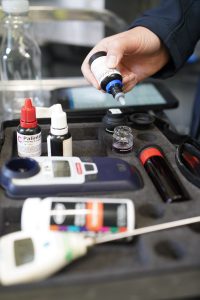
Drinking Water Quality is important to us all.
To find out more about Water Quality Standards, the monitoring we do and the major issues affecting water quality, click the Headings below.
Water Quality in Your Area
We have seen an increase in enquiries about water quality due to national news coverage about the topic and increased cases of misinformation spreading online.
Please be assured our water is completely safe to drink. We have extensive measures in place, at every stage of our water treatment process, to make sure that the water we supply to your taps is clean, high quality and above all, safe to drink. We take and test over 40,000 water samples each year and measure over 50 markers to ensure the water is compliant. These samples must meet the strict standards set out by our independent regulator, the Drinking Water Inspectorate.
If we ever identify a water quality issue within our area, this would be picked up quickly and we would issue appropriate advice directly to our customers through physical cards, our website and via both social and conventional media.
A little more information
All of our water comes from the aquifers and springs beneath the South Downs. Before this water is supplied to homes, it is first treated at one of our treatment works to strict drinking water standards.
Where necessary, we make use of specialised treatments like membrane filtration, UV technology, and chlorination to remove any risk to our customers. We also carefully monitor our water sources and the catchments which supply them and carry out risk assessments at every stage of the process. These rigorous procedures and treatment methods are in place to ensure all water you receive from us is clean, high quality, and safe to drink.
The issues in other parts of the country covered in the national news pose no risk to customers in our supply area. We would directly contact affected customers if this was ever a cause of concern.
Our water is mainly derived from the chalk of the South Downs - it is excellent quality, but its chalk source means that it is moderately hard. Water hardness comes from naturally occurring calcium and magnesium salts, dissolved from the chalk as the water passes through it. These natural salts give the water a crisp, pleasant and fresh taste and in addition, calcium and magnesium are essential minerals in our diet, making our water some of the best quality drinking water in the country. If you would like any further information relating to hardness please download our Water Hardness Advice Leaflet here.
Sometimes it can be important to know the exact water hardness in your area, particularity if you are purchasing new household appliances such as a dishwasher or washing machine. Use our app to find out the hardness of your water - click here
We add chlorine at our water treatment works to make sure the public water supply is safe to drink.
Sometimes you may notice a change in the taste or smell of your drinking water.
The water is often described as having a TCP, antiseptic, metallic, chemical, medicinal or bitter taste or smell to it. It's noticeable when you first run the tap, in boiled drinks, or when a glass of water has stood for a period of time.
Further advice on causes and what you can do to help can be found in our advice sheet ‘My tap water tastes or smells of medicine, chemical, disinfectant or TCP’ and can be downloaded here.
Drinking water can sometimes appear 'milky' or 'cloudy' when first drawn from the tap. This is usually caused by air and generally disappears after a short time. Although unsightly, the air in the water is not harmful.
Further advice on causes and what you can do to help can be found in our video or our advice sheet ‘My tap water is cloudy’ which can be downloaded here
Drinking water is normally clear and bright in appearance but very occasionally for a brief period it may appear discoloured or contain particles.
This maybe because we are carrying out some maintenance or repair work in your area, for example following a burst main.
Sometimes the discoloration can also be caused by internal plumbing. Further advice on causes and what you can do to help can be found in our advice sheets:
The Facts About Drinking Water Quality
Portsmouth Water has a long record of providing safe drinking water to the population of Portsmouth and the surrounding areas. The safety of the drinking water supply will always remain one of our principal objectives.
The greatest health risk associated with drinking water still arises from bacterial contamination. In the UK, only 150 years ago, contaminated water caused many outbreaks of waterborne disease such as typhoid, cholera and dysentery. In the western world these diseases have been virtually eliminated with modern treatment methods and in particular the introduction of chlorine as a disinfection agent. In the Third World unsafe drinking water remains one of the major causes of disease.
All drinking water contains some naturally occurring chemicals. The concept of PURE WATER would imply the absence of everything except H2O. If you drank a glass of pure water you would find it very flat and uninteresting. It's the natural minerals that give drinking water its taste. Drinking water taken from different parts of the UK can taste very different because of the varying natural minerals in each supply.
Most of Portsmouth's supplies originate from the chalk of the South Downs and these naturally contain the hardness salts of calcium and magnesium and traces of other minerals. Hardness salts fur up your kettle but many people consider that they also make the water more palatable. There are some substances - nitrates for example - which would cause concern if present in large amounts. So we carefully monitor levels and strictly follow the advice of the Government's Drinking Water Inspectorate who regularly audit our work.
Portsmouth Water abstracts groundwater found within the Chalk rock of the South Downs to supply public drinking water in your area. Around 85% of the water we supply comes directly from groundwater, sourced from boreholes or springs, with the remaining 15% being derived from the River Itchen - itself being groundwater fed.

The water we supply to our consumers has to meet strict drinking water standards which provide specific limits on a number of pollutants, including nitrates and pesticides. The quality of water abstracted from our sources is influenced by the land practices in our catchments, such as the use of artificial fertilisers which are predominantly derived from agriculture.
The traditional ‘end of pipe’ solution for dealing with these impurities is to build large treatment works. However, these are expensive to construct and operate and do not provide benefit to either the environment or our customers.
Our approach
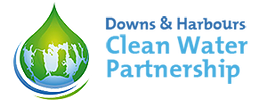
We work with farmers and landowners in our groundwater catchments by promoting a voluntary uptake of best management practices and services, so to reduce the impact of activities not only to the groundwater we abstract but also the local water environments.
Our main ‘on ground action’ is delivered through the Downs and Harbours Clean Water Partnership www.cleanwaterpartnership.co.uk. This partnership has been running since 2008 between Portsmouth Water, the Environment Agency and Natural England to proactively tackle diffuse pollution affecting the quality of groundwater, surface and coastal waters on West Sussex and East Hampshire.
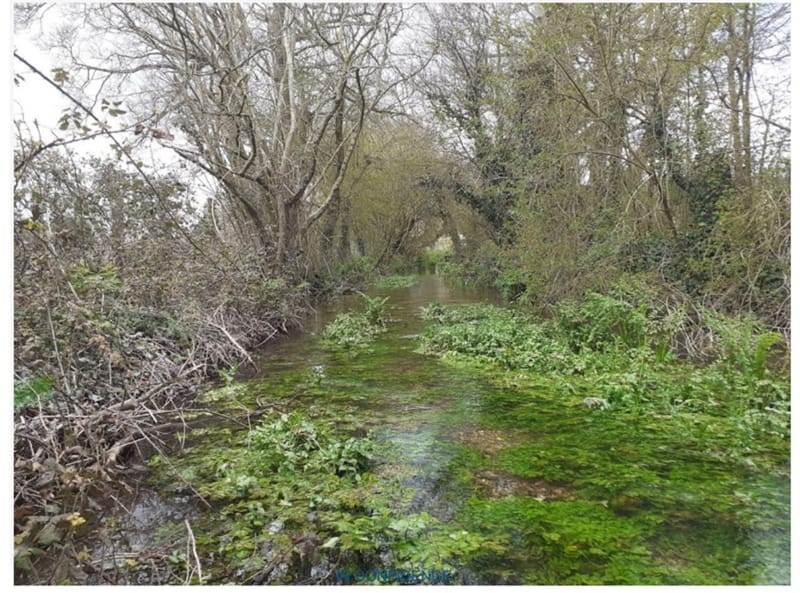
The River Ems is an approximately 9 km long chalkstream, flowing from (at its greatest extent) Stoughton in the north, southwest through Westbourne to Emsworth in the South. Recent estimates suggest that there are only about 260 chalk streams in the world1 , of which most can be found in England and Northern France. Most chalk streams in England are affected by a combination of historical modifications, discharges and/or water abstraction and a new Chalkstream Strategy was launched in October 2021
Funded by Portsmouth Water as part of their Water Industry National Environment Programme (WINEP), a number of river restorations were undertaken along the River Ems in 2015-2016 by the Arun and Rothers Rivers Trust (ARRT) and Wild Trout Trust (WTT) with a view to reducing the effect of physical modifications on the river and restoring it to a high-quality chalk stream with a healthy and diverse ecology.
In 2020, Portsmouth Water commissioned Atkins to undertake a data collation and review, with a particular focus on hydrology and hydrogeology in the River Ems catchment.
In June 2022, Atkins was commissioned to undertake a programme of further evidence gathering including investigation of the flow augmentation discharge. Portsmouth Water and the Environment Agency together agreed to trial adjustments to the flow augmentation discharge location. The trial took place in summer/autumn 2022, which followed a period of very low rainfall and a ‘drought’ being declared across much of South-East England.
The Arun and Rother Rivers Trust (ARRT) have been commissioned by Portsmouth Water to develop a 10-year restoration plan for the River Ems.
This 10-year Chalk Stream Restoration Plan will explore what these improvements might be and how they’ll be funded. It's essential this plan is developed collaboratively with the community and feedback to Portsmouth Water
This work will draw on existing resources, local knowledge and gather up-to-date information on the current status of the river, so that an effective and sustainable approach to improving its condition can be developed.
Below are the reports from these investigations:
Water quality regulations are in place to ensure water supplied to customers is safe to drink. There are 58 standards in the regulations covering microbiological, chemical and physical parameters. In order to monitor water quality from source to tap, the Company’s area of supply is divided into zones serving not more than 100,000 people from single sources.
Water Quality Standards
In the calendar year 2013 the Company carried out a total of 39,376 determinations in samples taken at treatment works, service reservoirs and customer taps. Of these the overall mean zonal compliance, which is the representation of overall drinking water quality in customers’ properties as reported to the Drinking Water Inspectorate (DWI) was 99.97% (99.96 in 2012).
The water quality regulations monitor 58 standards to ensure water quality meets the standards across all stages of our processes from source to the customers tap.
In addition to publishing the information on the website, the results are supplied to the Drinking Water Inspectorate who produces an annual report which contains a commentary on each company. The report may be viewed on the DWI website www.dwi.defra.gov.uk.
The specific compliance groups are explained in more detail below to provide an understanding of water quality monitoring from source to tap:
Process Control
Process control quality compliance is based upon a selection of parameters which are, in general terms, controlled by the processes in place at water treatment works. The focus is on chemical parameters and in 2013 100% of the samples taken were compliant.
Disinfectant Control
Disinfection control quality compliance is based upon a selection of parameters which demonstrate the effectiveness of disinfection and pathogen removal. Microbiological standards are of particular importance and based upon the presence of coliforms which excellent to use as an indicator of any problems with the disinfection of the water. In 2013 100% of the samples taken were compliant.
Distribution Maintenance
Distribution maintenance quality compliance is based upon a selection of parameters to reflect the age, condition and maintenance standards of water mains. In 2013 99.97% compliance was achieved. One sample failed the standard for iron; however the plumbing in the premises was found to be contrary to regulations and was the most likely cause of the failure.
Reservoir Integrity
Reservoir integrity quality compliance is based upon a selection of parameters to reflect the hygienic status of service reservoirs and includes microbiological analysis. In 2013 99.90% of the samples taken were compliant. There were two failures of the coliform standard at a service reservoir during 2013. The investigation into these failures found that they were most likely due to some faulty lagging on the tap which contaminated the samples while they were being taken.
Domestic Water Systems
Domestic water quality compliance is based upon a selection of parameters to reflect the design and condition of customers’ domestic water systems and includes microbiological analysis. In 2013 99.98% compliance was achieved. The microbiological parameter identified three samples that exceeded the coliform indicator at customers’ taps. Because coliforms occur so widely in the natural environment and are extremely sensitive to modern detection methods, there are occasional spurious results often due to the difficulty in achieving a thorough sterilisation of some taps used for sampling. All positive results are separately investigated to identify the cause, as well as the need for any remedial works, to ensure the integrity of the supply. In all of the three microbiological failures, the customer’s kitchen tap was identified or suspected of being the source of the contamination.
Other Quality Issues
Membrane plants (sophisticated filtration systems) are operating at 5 of our treatment works and 451 operational and compliance samples were taken during 2013 for cryptosporidium analysis from the final treated water from all these works. Of these samples, 17 contained low levels of cryptosporidium oocysts. Although there was no perceived risk to health at these low levels the company has made plans to install some treatment at two of these works to alleviate any potential risk in the future.
In 2013 we continued operating a Water Safety Plan covering all identifiable risks from source to tap known as the Drinking Water Safety Plan. The Plan has been audited by the Drinking Water Inspectorate.
2009 saw the launch of the Downs and Harbours Clean Water Partnership, a forward-thinking initiative formed by Portsmouth Water, Natural England and the Environment Agency. The Partnership has been set up to tackle diffuse water pollution issues affecting the quality of ground, surface and coastal waters in our supply area. The Clean Water Partnership’s focus is on reducing inputs of nutrients, particularly nitrates, to the water environment. The project is working to:
- Protect and improve the water quality of groundwater sources used for public water supply
- Reduce algal growth in Portsmouth, Chichester, Langstone Harbours and the River Hamble estuary and help improve the near-shore environment
- Reduce pressures on the ecology of local rivers, such as the Hamble, Meon, Wallington, Ems and Lavant
The Partnership offers confidential services and support to farmers and other land owners; these services include nutrient, manure, soil and water management plans as well as workshops, one-to-one consultations and farm demonstrations of best farm practices. The past year has seen a greater uptake of these services and the workshops are seeing more participants.
Enquiries
Enquiries concerning water quality are handled by the Water Quality Department in the first instance. If a visit or samples are required, an appointment will be made for a staff member to call. If the situation requires immediate action, a member of staff will be sent the same day to take water samples, usually from the kitchen tap. In all cases we will provide the customer with written information concerning the laboratory analysis, along with any findings. The Company also has a policy of providing free analysis with a written report to all customers who are concerned about lead levels.
The Water Supply (Water Quality) Regulations 2000, which were made in response to the introduction of the European Drinking Water Directive (98/83/EC), have been amended by the Water Supply (Water Quality) 2000 (Amendment) Regulations 2007. The above regulations impose stringent standards for over 50 different parameters that are used to assess the quality of drinking water. These parameters cover aesthetic, chemical, microbiological, physical, and health-related aspects of water quality. They are divided into the following types of parameters:
• Directive parameters: Required by European legislation e.g. E.coli and pesticides
• National parameters: Required by British legislation in addition to Directive parameters e.g. Aluminium and Iron.
• Indicator parameters and additional monitoring requirements: These give an indication of a deteriorating situation if limits are breached e.g. chloride and ammonia. They do not necessarily have immediate health significance at the limit set.
Water samples are taken from treatment works, reservoirs and customer taps to show the water is fit for human consumption. They are analysed for the substances listed in the standards using state- of-the-art technology and laboratory techniques. Some substances are measured in milligrammes per litre (mg/l); 1mg/l is one part in a million. Others are measured in microgrammes per litre (µg/l); 1µg/l is one part in a billion.
Even though Portsmouth Water provides consistently high quality drinking water, occasionally some tests fail to meet the required standards. If a sample fails to meet requirements it does not necessarily mean that the water is harmful to health or unfit to drink and Portsmouth Water investigates each one thoroughly.
Failures can arise for a variety of reasons - for example in individual properties plumbing materials and installations may cause a problem where the mains water is of good quality and neighbouring properties are unaffected. If any problems are found we act immediately and we inform the Local Authority and Drinking Water Inspectorate (DWI) of any compliance sample failures.
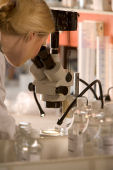
Throughout the water supply process the Company monitors drinking water quality by taking samples from sources, treatment works, service reservoirs and at customers’ taps.
Analysis takes place in the Company’s purpose built Laboratory to strict standards set down by the Statutory Water Quality Regulations. Audits of the sampling and analytical process are conducted by the Government’s ‘Drinking Water Inspectorate’ who regularly reports that the Company has one of the highest pass rates in the country. When an isolated failure occurs the cause is separately investigated.
Being derived from the chalk aquifer, the Company’s water is moderately ‘hard’. This can cause problems with the build up of limescale on hot water appliances, but hard drinking water is believed by the medical profession to be better for human health than soft water.
Water quality regulations are in place to ensure water supplied to customers is safe to drink. There are 58 standards in the regulations covering microbiological, chemical and physical parameters. In order to monitor water quality from source to tap, the Company’s area of supply is divided into zones serving not more than 100,000 people from single sources. Every year the Company takes a number of samples at treatment works, service reservoirs and customer taps.
See the water quality results for your area on our app here - Water quality results in your area
Cryptosporidium
Cryptosporidium is a very small protozoan parasite which is found in many 'hosts' including birds, fish and mammals. In humans it can cause severe sickness and diarrhoea particularly in the young, elderly and immuno-compromised. A very low level dose can be sufficient to cause infection. It freely exists in the natural environment and can exist in a dormant state for long periods. It can be transmitted from unwashed fruit and vegetables, swimming pools and occasionally water supplies.
The Company has conducted risk assessments at all its sources and regular monitoring takes place. At five sites, Farlington, Lovedean, Soberton, Fishbourne and River Itchen, the Company has installed sophisticated membrane treatment plants which are capable of removing the infective cryptosporidium oocysts.
Nitrates
Intensive agricultural production in recent years has led to the increase of nitrates appearing in underground water supplies. Certain parts of the UK have been more affected than others. In part of the Portsmouth Water area we have had to install blending arrangements to ensure that all our supplies are within the limits laid down by the Water Quality Regulations.
Pesticides
The present regulations set a very strict limit for pesticides in drinking water - they must not be present in a concentration greater than one part in ten thousand million. This very low concentration ignores the very different toxicity levels of various pesticides.
At all treatment works and customer taps we regularly check for the presence of some 30 compounds which we know to be in use.
Fluoride
Water containing fluoride compounds has been shown to help prevent dental cavities from forming - particularly in young children, although there are conflicting reports about its value as well as other side effects.
Currently we do not add fluoride to any of our supplies, although one of our sources does have a low level of natural fluoride present but not at a level recommended for dental purposes.
In 2003, legislation was introduced that enables Health Authorities to instruct water companies to fluoridate their supplies; however this has not yet happened in our area.
If the Health Authorities did decide to pursue fluoridation then a public consultation exercise would have to be conducted. This would give consumers the opportunity to express their views to the Health Authorities before any final decision can be made.
Lead
Water at its source and in mains is virtually lead free. However many properties still have lead plumbing and lead service pipes supplying the water into the house. If you live in a house built before 1970, chances are you may have lead pipework. Your drinking water can pick up lead from the pipework that runs from the water main underground and into your property, or from lead pipework inside your property. If you would like any further information relating to Lead please download our ‘Lead Pipes in your home Advice Leaflet’ here
The leaflet will provide you with information on:
- Where lead comes from
- Why lead can be a problem
- Where we sample and what we find
- What Portsmouth Water are doing about lead
- What to do if you think you have lead
This publication was produced by Water UK as a Consumers Guide to Looking After Water In The Home.
It covers subjects such as taste, odour and colour of water. Lead pipes, pipe ownership and many other useful topics to help you 'look after water in your home'.
Click here to view Water UK's Consumer Guide to Looking After Water in Your Home.
Deciding whether water has an unusual taste is a very subjective question. Without doubt some palates are much more sensitive than others and it is sometimes difficult to know whether it is detectable by the sense of taste or smell.
Most taste complaints we receive are usually linked to the chlorine dose that we add to ensure disinfection of the water. Chlorine has been used for disinfection by the Industry for many years and it is probably due to its use that most waterborne diseases have been eliminated in the western world.
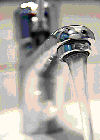
It is important that taps that are used for drinking water are kept clean. Whilst the water coming to your tap is safe, many bacteria can live in the kitchen and some can grow both on the outside of the tap and inside the lip of the spout. They are not visible to the naked eye, but the tap can become contaminated from food or items washed in the sink. For this reason, you should never allow food to come into contact with the end of the tap.
Occasionally fungi, naturally present in the air, can also attach itself to damp surfaces and grow into a visible slime usually black in colour (and sometimes pink). This slime is seen usually in bathrooms and kitchens on taps, shower heads, tiles and several other places.
Unfortunately there is nothing we can do to the drinking water supply to prevent this type of growth and the only way to keep on top of the problem is by routine cleaning of all the surfaces which can be affected.
Taps can be cleaned as follows:
- Regularly clean household taps thoroughly by using a small brush (such as an old toothbrush) dipped in a mild solution of bleach or sterilising fluid such as is used for cleaning babies’ bottles
- Pay particular attention to the inside of the spout and/or any plastic insert
- After cleaning the tap, run it for a few moments to remove any remaining disinfectant
- Don’t leave the dishcloth on the tap to dry as this can increase the likelihood of contamination
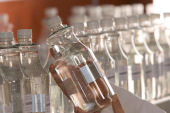
None of the bottled water available today is of better quality than tap water. In certain circumstances the quality can be inferior to tap water especially if the bottle has been stored in warm conditions.
The real difference between bottled and tap water is the cost. The bottled variety costs around one thousand times more than tap water and unlike tap water delivery is an additional cost!
Try filling a bottle with tap water, leaving it in the fridge overnight and then trying a taste test. You'll be surprised at the result!
The market for domestic water filters has increased enormously in recent years. This is partly due to the extravagant advertising about them which casts doubt on the quality of tap water. Tap water is entirely safe to drink and you need not worry about it affecting your health.
In some cases filters can improve taste. They do, however, remove all chlorine and this means that the protection against contamination is also removed. If you do use a filter, remember to change the cartridge regularly, and always keep the filtered water in a cool place. The fridge is best.
Ensuring the quality of our drinking water is crucial to the service we provide to our customers. DWI announced the use of the Drinking Water Safety Plan (DWSP) concept (originally developed by the World Health Organisation) to the regulation of drinking water quality during 2004. This is a source to tap risk management approach that identifies and proactively manages risks to drinking water quality. This approach is central to the way in which we ensure a continuous supply of safe drinking water now and in the future.
A Drinking Water safety Plan consists of three key elements:
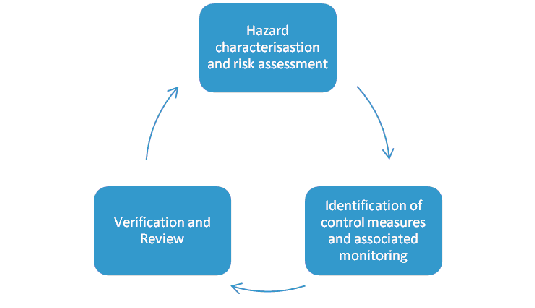
Portsmouth Water Approach
When assessing the risks to drinking water quality we identify hazards and hazardous events and score the likelihood and consequence of these occurring to determine the level of risk. We put control measures in place to manage any risk in order to reduce the likelihood of these hazardous events happening.
Our risk management approach is an integral part of our Periodic Review and business planning process which helps to direct investment into the most important areas. An example of this process is the significant risk that the trihalomethane (THM) standard might be breached in the near future; a solution was identified and put forward in our final business plan to OFWAT and accepted.
More recently, greater effort has been focused on determining risks to raw water quality within our catchments. Portsmouth Water is building upon the existing Downs & Harbours Clean Water Partnership and has created a Catchment Management programme to upscale approaches to tackle diffuse water pollution. For more information visit the Catchment Management section below.